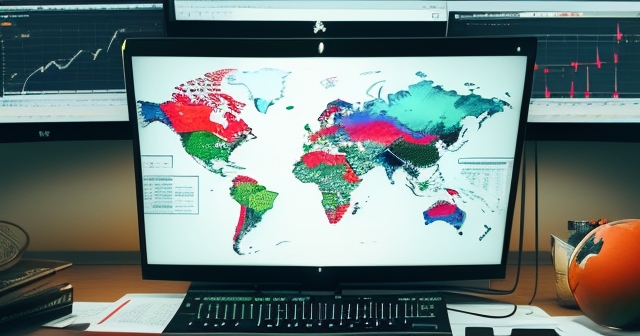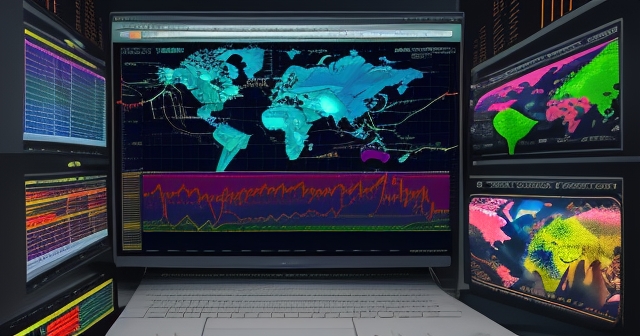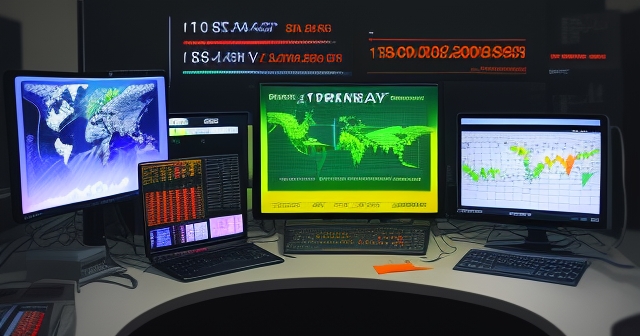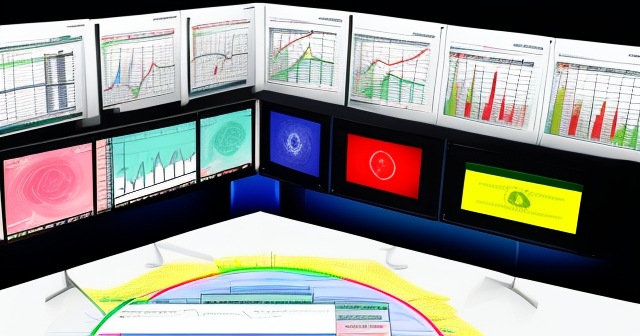The Dynamic World of Forex: Exploring Its Core Benefits for Traders
The foreign exchange (forex or FX) market stands as the largest and most dynamic financial market globally, offering distinct characteristics that attract traders worldwide. It’s a place where currencies from every corner of the globe are traded, influencing everything from international trade to the cost of your next vacation abroad. But what specifically makes the forex market so compelling for individuals like you looking to engage in trading? This article will delve into the primary benefits of forex trading, explaining why it presents unique opportunities and what you need to know to navigate its exciting landscape. We’ll explore its round-the-clock accessibility, unparalleled liquidity, the volatility that creates opportunities, and the flexible trading mechanisms available.
- The foreign exchange market is the largest financial market in the world.
- Traders can access the market 24 hours a day.
- High liquidity allows for easier execution of trades.

Unparalleled Global Accessibility: Trading Around the Clock
One of the most significant advantages of trading currencies is its accessibility. Unlike traditional stock markets with fixed trading hours tied to a specific geographic location, the forex market operates 24 hours a day, five days a week. This remarkable feature is a direct result of its global, decentralized nature – it’s an over-the-counter (OTC) market with participants spanning the entire planet.
Think about it: when the trading day concludes in New York on Friday afternoon, the market is already opening in Sydney and Tokyo for their trading week. As their sessions begin to wind down, the London market comes alive, followed again by New York. This continuous cycle means that regardless of where you live, you can find active trading periods that fit your schedule, whether you’re an early bird or a night owl. This 24/5 operation provides incredible flexibility, allowing you to react to global events and market movements whenever they occur, rather than being restricted to limited windows.

This constant activity also means that news and economic data released at any time of day or night can immediately impact currency prices, creating trading opportunities around the clock. You don’t have to wait for the market to open the next morning to act on a significant news event that happened overnight.
Understanding Market Structure: The Decentralized Nature of Forex
To truly appreciate the 24/5 benefit, it helps to understand the market’s structure. The forex market isn’t housed in a single building like a stock exchange. Instead, it’s a vast, interconnected network of banks, financial institutions, corporations, governments, and individual traders (like us!). This OTC structure facilitates direct transactions between participants across different time zones.
The major trading sessions – Sydney, Tokyo, London, and New York – represent the periods when banks and traders in those regions are most active. The market is typically most volatile and liquid during the overlaps of these sessions, particularly the London-New York overlap, as it sees participation from two of the largest financial centers simultaneously. Understanding these session overlaps can help you identify periods of higher activity and potentially greater opportunity, depending on your trading strategy.

So, while you can trade any time the market is open from Sunday evening ET to Friday afternoon ET, being aware of the global trading sessions and their overlaps can be a strategic advantage for pinpointing optimal times to find liquidity and volatility aligned with your goals. It’s a market that truly never sleeps for long!
The Power of Liquidity: Smooth Transactions and Tight Spreads
Another defining characteristic that contributes significantly to the FX market benefits is its unparalleled liquidity. Being the largest financial market in the world, with trillions of dollars exchanged daily, means there are constantly buyers and sellers for virtually every major currency pair.
What does high liquidity mean for you as a trader? Primarily, it means that you can typically enter and exit trades very quickly and efficiently. When you want to buy or sell a currency pair, there’s almost always someone on the other side willing to take the trade immediately. This is known as efficient order execution. You are less likely to experience significant price delays or slippage (where your order is filled at a price different from what you expected) compared to less liquid markets, especially when trading major currency pairs like EUR/USD, USD/JPY, GBP/USD, or USD/CHF.
Furthermore, high liquidity often translates into tight spreads. The spread is the difference between the buying price (ask) and the selling price (bid) of a currency pair. It’s essentially the cost of executing a trade, often representing the broker’s commission. In highly liquid markets like forex, particularly for major pairs, the competition among participants is so intense that spreads tend to be very narrow. This means the transaction cost per trade can be relatively low, which is a considerable advantage, especially for active traders who execute many trades.
| Liquidity Level | Spread |
|---|---|
| High Liquidity | Tight Spreads |
| Low Liquidity | Wider Spreads |
Consider this: in illiquid markets, finding a counterparty for your trade might take time, and you might have to accept a less favorable price to get your order filled. The spread would likely be wider. In forex, especially with major pairs, the sheer volume ensures a continuous flow of buy and sell orders, keeping the difference between the bid and ask price minimal. This ease of entry and exit at competitive prices is a major draw for many traders.
Volatility: Navigating Opportunity and Risk
While high liquidity ensures smooth transactions, it’s the inherent volatility of currency pairs that creates the potential for profit. Volatility refers to the degree of variation of a trading price over time. In the forex market, prices are constantly fluctuating, responding to a multitude of global factors. These fluctuations, if predicted correctly, are what allow traders to make money by buying low and selling high, or selling high and buying low.
Many factors drive this volatility. Economic data releases are among the most significant catalysts. Announcements regarding interest rates, inflation, employment figures (like the U.S. Non-Farm Payrolls), Gross Domestic Product (GDP), and retail sales from major economies can cause sharp, immediate price movements. Central bank policies, political developments, and geopolitical events also play a crucial role.

For example, a surprise interest rate cut from a central bank might cause that country’s currency to weaken significantly against others, as lower interest rates make the currency less attractive to foreign investors seeking yield. Conversely, stronger-than-expected economic growth data could lead to a currency appreciating.
While volatility is essential for trading opportunities, it’s also crucial to recognize that it comes with risk. Rapid price swings can lead to quick profits but also quick losses if the market moves against your position. Successful forex traders learn to measure and manage volatility, using it to their advantage while implementing robust risk management strategies to protect their capital. Understanding *why* currencies move – the interplay of economic fundamentals, news, and sentiment – is key to navigating this aspect of the market effectively.
Trading Flexibility: Going Long or Short with Ease
Another powerful forex trading advantage is the ease with which you can speculate on both rising and falling prices. In the stock market, it’s typically easier and more common to profit from a stock’s price increasing (going “long”). While short-selling is possible, it can sometimes involve more complex procedures and potentially unlimited risk if the price rises indefinitely.
In forex, currency pairs are always quoted in relation to each other. A pair like EUR/USD represents the value of one Euro (the base currency) in U.S. dollars (the quote currency). When you trade EUR/USD, you are simultaneously buying one currency and selling the other. If you believe the Euro will strengthen against the U.S. dollar, you would “go long” EUR/USD, meaning you buy Euros and sell U.S. dollars. If the price of EUR/USD rises (meaning the Euro is now worth more U.S. dollars), you can sell your Euros back for a profit in U.S. dollars.
Conversely, if you believe the Euro will weaken against the U.S. dollar, you would “go short” EUR/USD, meaning you sell Euros and buy U.S. dollars. If the price of EUR/USD falls (meaning the Euro is now worth fewer U.S. dollars), you can buy the Euros back at a lower price to close your position and make a profit. This ability to seamlessly profit from downward price movements is just as fundamental as profiting from upward movements and significantly expands the range of potential trading opportunities in any market condition.
| Trading Method | Description |
|---|---|
| Going Long | Buying a currency pair expecting its value to rise. |
| Going Short | Selling a currency pair expecting its value to fall. |
This inherent duality means you don’t have to rely solely on a bull market to find opportunities. Whether the global economic outlook is positive or negative, there are always currency pairs that are likely to move in one direction or another based on relative strength or weakness, providing avenues for profit for traders adept at analyzing market dynamics.
Understanding Leverage: Amplifying Potential (and Risk)
Perhaps one of the most enticing, yet potentially dangerous, features of forex trading is the widespread availability and use of leverage. Leverage allows you to control a large position in the market with a relatively small amount of your own capital, known as margin.
Brokerages typically offer leverage ratios like 50:1, 100:1, 200:1, or even higher. A 100:1 leverage ratio means that for every $1 of your own capital (margin), you can control $100 worth of currency. If you wanted to open a standard lot position (100,000 units of the base currency) in EUR/USD, which might be worth approximately $100,000, with 100:1 leverage, you would only need $1,000 of your own capital as margin to control that position.
The primary benefit of leverage is that it magnifies potential profits. If the EUR/USD price moves favorably by just 100 pips (a common unit of measurement in forex, representing a tiny price change), that 100,000-unit position could generate a profit of around $1,000 (depending on the pair and the specific value of a pip). In this scenario, your $1,000 margin deposit could potentially earn you $1,000 profit, representing a 100% return on your initial capital, which is simply not possible with a cash-funded account without leverage.

However, it is critically important to understand that leverage is a double-edged sword. Just as it magnifies potential profits, it equally magnifies potential losses. If the market moves against your leveraged position, losses can accumulate rapidly, potentially exceeding your initial margin deposit. This is why robust risk management practices are absolutely essential when trading with leverage. Tools like stop-loss orders, which automatically close your position if the price reaches a certain unfavorable level, are vital for limiting potential downside.
For new traders, starting with lower leverage ratios or trading smaller position sizes (like mini or micro lots) is often recommended to become comfortable with how leverage works and its impact on account equity before moving to higher leverage or larger trade sizes. Leverage is a powerful tool, but it demands respect and careful handling.
Diversification and Variety: A Wide Range of Currency Pairs
The forex market offers a vast selection of currency pairs to trade, providing ample opportunity for diversification and finding instruments that align with your analytical preferences or interest in specific global economies. While there are hundreds of potential currency combinations, they are typically categorized:
- Major Pairs: These are the most frequently traded pairs and involve the U.S. dollar (USD) paired with other major global currencies. Examples include EUR/USD, USD/JPY, GBP/USD, USD/CHF, AUD/USD, USD/CAD, and NZD/USD. These pairs are known for their high liquidity and typically tighter spreads.
- Minor Pairs (or Cross-Currency Pairs): These pairs do not involve the U.S. dollar but consist of combinations of the other major currencies, such as EUR/GBP, EUR/JPY, GBP/JPY, AUD/CAD, etc. They can also offer good liquidity but may have slightly wider spreads than the majors.
- Exotic Pairs: These pairs consist of one major currency paired with a currency from a developing or smaller economy (e.g., USD/TRY, EUR/ZAR, GBP/MXN). Exotic pairs tend to be less liquid, have wider spreads, and can be subject to higher volatility due to political or economic instability in the smaller economy.
The availability of such a wide range of pairs means you can trade based on your analysis of different economies and their relative strengths. If you have a strong view on the relationship between the European and British economies, you can focus on EUR/GBP. If you are following developments in Canada and Australia, AUD/CAD might be of interest. This diversity allows traders to specialize or diversify their trading across different economic landscapes.

Moreover, many brokers also offer the ability to trade forex via other instruments, such as Contracts for Difference (CFDs). CFDs allow you to speculate on the price movement of currency pairs without owning the underlying currencies directly. They essentially mirror the price action of the spot forex market but are traded as a contract between you and the broker. CFDs often provide flexible position sizing and the same leverage benefits as spot forex, making them a popular choice for retail traders.
If you’re considering starting forex trading or exploring more CFD products, Moneta Markets is a platform worth considering. It’s based in Australia and offers over 1000 financial instruments, suitable for both beginners and professional traders.
Hedging Capabilities: Mitigating Currency Risk
Beyond speculation, the forex market also serves a vital function for businesses and investors: hedging against currency risk. Companies involved in international trade are constantly exposed to fluctuations in exchange rates. For instance, a U.S. company selling goods in Europe needs to convert the Euros they receive back into U.S. dollars. If the Euro weakens against the dollar before they convert the funds, they will receive fewer dollars than expected, impacting their profitability.
To mitigate this risk, the company can use the forex market to “hedge” their exposure. They might enter into a forward contract or use options to lock in a favorable exchange rate for their future transaction. This ensures that even if the spot market rate moves unfavorably, they are protected. While hedging is typically more relevant for corporations and large institutions, individual investors with international portfolios or those planning large foreign currency transactions might also find the ability to hedge in the forex market beneficial.
Understanding the hedging function provides insight into the fundamental purpose of the forex market beyond just speculation. It’s a crucial tool for managing financial risk in a globalized economy, and this constant need for hedging contributes significantly to the market’s liquidity and activity.
Leveraging News and Economic Data: Specific Trading Opportunities
As mentioned earlier, news releases and economic data are primary drivers of short-term volatility in the forex market. This fact itself presents specific, often predictable, trading opportunities for those who understand how to trade around these events. Strategies centered on “trading the news” involve anticipating or reacting quickly to the impact of high-impact economic announcements.
Major economic indicators include:
- Interest Rate Decisions: Made by central banks (like the U.S. Federal Reserve, European Central Bank, Bank of England, etc.), these are arguably the most impactful news events. Changes or even just shifts in language regarding future interest rate policy can cause massive market movements.
- Inflation Data (CPI, PPI): Measures the rate at which prices for goods and services are rising. High or rising inflation can pressure central banks to raise interest rates, making a currency potentially more attractive.
- Employment Data: Figures like the U.S. Non-Farm Payrolls (NFP) are closely watched indicators of economic health. Strong employment growth often signals a healthy economy, potentially leading to currency strength.
- GDP (Gross Domestic Product): Represents the total value of goods and services produced by an economy. It’s a key measure of economic growth. Strong GDP growth is generally bullish for a currency.
- Retail Sales: Indicates consumer spending levels, which are a major component of most economies. Strong retail sales suggest healthy consumer confidence and economic activity.
Traders often prepare for these releases by analyzing analyst expectations (the “consensus”) and considering how different outcomes (actual data being higher or lower than expected) might impact the currency pair. The market may exhibit consolidation (trading within a tight range) just before a major release as traders wait for confirmation. Once the data hits, there can be a sudden surge in volatility, potentially leading to a strong trend or a significant breakout from the pre-release range. This period can offer substantial profit potential in a short amount of time.
However, trading the news is not for the faint of heart. It requires quick decision-making, dealing with potentially significant price gaps, and often involves very high volatility that can trigger stop-loss orders prematurely or lead to considerable losses if the market moves unexpectedly. It is a strategy that requires experience, discipline, and a robust understanding of how economic data influences monetary policy and market sentiment.
Broker Features and Trading Platforms: Enhancing the Experience
The benefits we’ve discussed – 24/5 access, liquidity, volatility, flexibility, and leverage – are delivered to retail traders like us through online forex brokers and their trading platforms. The quality of your trading experience is heavily influenced by the features and services your broker provides.
Good brokers contribute to the benefits of forex trading by offering:
- Competitive Spreads and Commissions: Lower trading costs directly impact your profitability. Brokers compete fiercely, leading to tight spreads, especially on major pairs.
- Fast and Reliable Execution: High liquidity is best utilized with a platform that can execute your trades instantly at the desired price, minimizing slippage. Look for brokers with advanced order execution technology.
- Stable Trading Platforms: A robust and stable trading platform (like MetaTrader 4, MetaTrader 5, or proprietary platforms) is essential. It provides access to real-time price feeds, charting tools, technical indicators, and allows for quick order placement and management.
- Risk Management Tools: Features like guaranteed stop-loss orders, negative balance protection, and margin call alerts help you manage the risks associated with leverage and volatility.
- Educational Resources: Reputable brokers often provide educational materials, webinars, and market analysis to help traders improve their knowledge and skills.
- Customer Support: Reliable and responsive customer support is crucial if you encounter any issues with your account or platform.
When choosing a trading platform, the flexibility and technical advantages offered are significant. Many brokers support popular platforms such as MT4, MT5, and Pro Trader, combining high-speed execution with competitive spread settings to provide a superior trading experience.
Finding a broker that aligns with your needs – whether you prioritize the lowest possible spreads, the widest range of instruments, specific platform features, or strong regulatory oversight – is a crucial step in capitalizing on the benefits of forex trading effectively. Researching and comparing brokers based on these criteria is a worthwhile investment of your time.
Addressing Risks: Navigating the Downside
While the benefits of forex trading are substantial, it would be irresponsible not to emphasize the inherent risks. Like any form of financial trading, forex involves the potential for loss, and the features that create opportunity can also amplify risk if not managed properly.
- Leverage Risk: As discussed, while leverage magnifies profits, it also magnifies losses. A small unfavorable price movement can wipe out a significant portion or even all of your margin deposit. Margin calls can occur, requiring you to deposit more funds to maintain your position, or your position may be automatically closed at a loss.
- Volatility Risk: While volatility creates opportunity, it can also lead to rapid and unexpected price changes that move against your position. News events can cause sudden spikes or drops, and “black swan” events (rare, unpredictable occurrences) can have extreme impacts.
- Weekend Risk / Gapping: The retail forex market typically closes over the weekend. If significant news or events occur while the market is closed, the price when the market reopens on Sunday evening can be significantly different from the Friday closing price. This phenomenon, known as a “weekend gap,” can be unfavorable and occur outside of your control while your positions are open.
- Counterparty Risk: In the OTC market, you are trading directly with your broker or another counterparty. While regulation helps mitigate this, it’s important to choose a reputable and well-regulated broker to ensure the security of your funds and the integrity of trade execution.
Therefore, approaching forex trading requires a serious commitment to learning, discipline, and robust risk management. Never trade with money you cannot afford to lose. Always use risk management tools like stop-loss orders. Start with a small amount of capital and low leverage to gain experience. Continuous education about market dynamics, economic factors, and trading strategies is key to navigating the risks effectively and working towards consistent profitability.
If you are seeking a globally regulated forex broker, Moneta Markets holds multiple regulatory certifications, including those from FSCA, ASIC, and FSA. They offer segregated client funds, free VPS, and 24/7 Chinese customer support, making them a preferred choice for many traders.
Why Trade Forex? Summarizing the Key Advantages
So, why do millions of traders worldwide engage with the foreign exchange market? Let’s summarize the core benefits of forex trading we’ve explored:
- 24/5 Accessibility: Trade on your schedule, reacting to global events whenever they happen.
- Exceptional Liquidity: Easy entry and exit from positions, with often tight spreads on major pairs, reducing transaction costs.
- Volatility & Opportunities: Constant price movements driven by global factors create numerous chances to profit from both rising and falling markets. News events provide specific, high-potential trading windows.
- Trading Flexibility (Long/Short): The ability to profit from both appreciation and depreciation of currency pairs using instruments like CFDs.
- Leverage: The potential to control larger positions with less capital, significantly amplifying potential returns (though also amplifying risk).
- Diverse Instruments: Access to a wide array of currency pairs, allowing for diversification or specialization based on economic interests.
- Hedging Utility: While mainly for institutions, the market’s function in hedging contributes to its overall liquidity and depth.
These characteristics combine to create a dynamic and accessible market. For those willing to dedicate the time to learning and practicing sound trading principles, including diligent risk management, the forex market offers a world of potential opportunities.
Getting Started: Knowledge is Your Greatest Asset
For individuals new to the market, the sheer volume of information and the complexity of concepts like leverage or economic indicators can feel overwhelming. However, every experienced trader started exactly where you are. The key is to approach forex trading as a skill to be learned and mastered, not a quick path to riches. The “Sage” archetype reminds us that knowledge is power, especially in financial markets.
Focus on building a solid foundation of understanding:
- Learn the basics of how currency pairs work and what influences their prices.
- Understand the concept of pips, spreads, margin, and leverage thoroughly.
- Study different types of analysis, including fundamental analysis (how economic data and news impact currencies) and technical analysis (using charts and patterns to identify potential price movements).
- Develop a trading plan that includes clear entry and exit rules, position sizing, and risk management protocols.
- Practice trading in a risk-free environment using a demo account before committing real capital.
- Stay informed about global economic events and news that could impact the currencies you trade.
Many brokers offer educational resources designed to help you navigate these steps. Utilise these tools, engage with trading communities, and never stop learning. The journey to becoming a proficient forex trader is continuous.
Continuous Learning and Adaptation
The global financial landscape is constantly evolving, influenced by new technologies, changing economic policies, and unpredictable world events. Therefore, continuous learning and adaptation are crucial for long-term success in forex trading. What worked yesterday may not work today, and market dynamics can shift.
Stay updated on global economic calendars, central bank announcements, and geopolitical developments. Explore different trading strategies and see how they perform in varying market conditions. Evaluate your own trading performance regularly, identifying what works and what doesn’t, and adjust your approach accordingly. Embrace the process of refinement and improvement.
Remember the mission: to gain knowledge and apply it to navigate the markets effectively. The forex market, with its inherent characteristics, provides a rich environment for applying this knowledge, but it demands respect and a commitment to ongoing education.
Conclusion: Embracing the Opportunities Responsibly
In conclusion, the forex market presents a unique and compelling set of potential benefits for traders worldwide. Its 24/5 accessibility caters to diverse schedules, while its unparalleled liquidity ensures efficient and cost-effective transactions. The market’s inherent volatility, often amplified by significant news and economic data releases, creates frequent opportunities for speculation on price movements. Furthermore, the flexibility to easily go long or short and the availability of leverage offer powerful tools for magnifying potential returns (while requiring careful risk management).
These forex market benefits make it an attractive arena for those seeking dynamic trading opportunities. However, success in this market is not guaranteed and comes hand-in-hand with significant risks, particularly those associated with leverage and volatility. Approaching forex trading with a solid educational foundation, a disciplined mindset, and a strong emphasis on risk management is paramount.
By understanding the market’s structure, the drivers of currency movements, and the tools available to you, you can position yourself to potentially capitalize on the vast opportunities that the foreign exchange market offers. It’s a challenging but potentially rewarding journey, where knowledge, preparation, and prudent risk-taking are your most valuable assets.
benefits of forex tradingFAQ
Q:What are the benefits of forex trading?
A:The benefits include 24/5 market access, high liquidity, volatility for trading opportunities, and the ability to go long or short.
Q:How does leverage work in forex trading?
A:Leverage allows traders to control larger positions with a smaller amount of capital, magnifying both potential profits and losses.
Q:What is hedging in forex?
A:Hedging involves taking a position in the forex market to mitigate potential losses from currency fluctuations.

留言